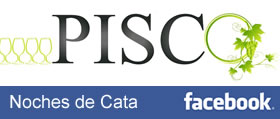Pisco / Peru: The country you have never visted
Translated by Katrina Heimark
Jauja, variation of the Quechua word “Huaca” which means…
Province of Jauja
Jauja, variation of the Quechua word Huaca which means peaceful,  placid, quiet place. In the pre-Inca period it was the seat of the Xauxa-Huanca confederation and was the administrative capital of the city of Tunanmarca. In the Tahuantinsuyo period it stretched from Hatun Xauxa and part of Hurin Huanca, and in the period of the Conquest it was founded by Francisco Pizarro as the Capital of the New Castille on April 25, 1534. It was a settlement for Spaniards during the colonial period, and thanks to its location as a mythic place of riches, it was called the “Country of Jauja.”
placid, quiet place. In the pre-Inca period it was the seat of the Xauxa-Huanca confederation and was the administrative capital of the city of Tunanmarca. In the Tahuantinsuyo period it stretched from Hatun Xauxa and part of Hurin Huanca, and in the period of the Conquest it was founded by Francisco Pizarro as the Capital of the New Castille on April 25, 1534. It was a settlement for Spaniards during the colonial period, and thanks to its location as a mythic place of riches, it was called the “Country of Jauja.”
Jauja is a typical colonial city with two storey buildings, wide doors, windows and balconies made of wood, and peaked-tiled roofs. The city is characterized by its religious festivals, colorful dances, beautiful natural landscapes, and by its excellent climate. In the 18th Century it was recommended to visit the city to cure oneself of respiratory problems; important people from international society and from distant places went to Jauja to be cured, which caused the construction of the Olavegoya hospital. A novel about these events, titled “The city of the Tisicos” was written by Abraham Valdelomar. The principal plaza of Jauja has a central fountain constructed of molded metal, with beautiful gardens surrounding it, two squares to the sides and under which public restrooms have been installed. In the front part of the plaza there is a monument to Don Andrés Avelino Cáceres, a bust in honor of Francisco Bolognesi, and a small statue that represents a farmwoman and her child.
In the surrounding area there is the Matriz Church, the Provincial Municipality, the INC, banks, colonial style houses, commercial establishments, and other buildings. The 1st Sunday of October is the celebration of the Patron Festival in honor of the Virgin de Rosario and Mamallanchic Chapetona.
Matriz Church of Jauja
When he founded the city of Jauja on April 25, 1534, Pizarro assigned a place for the construction of a future church; which is today located in front of the principal plaza of the city. Its construction is monumental, with roman traits. Its main altar is beautifully and over-elaborately styled and dedicated to the Virgin de Rosario. The church also has a pulpit made of wood and side altars of different styles. The dome of the church is decorated with paintings on china.
The towers were built in different eras, and in regards to the bells, the biggest is said to have been made in the Ocopa Convent with golden jewels of the highborn women of Jauja. Its pealing can be heard up to five leagues away. In the church there are also old Italian-made pipe organs. The celebration of the Patron Festival is the first Sunday of October. The church was remodeled in 1935, with a dome added to the nave and the side wings. The presbytery has three beautiful paintings from the 18th Century.
Poor Christ Chapel “Capilla de Cristo Pobre”
The Capilla de Cristo Pobre was ordered to be built by the French priest Luis Grandin sometime between the years 1920 and 1928, and was the first chapel built with noble material in the city of Jauja. Its exterior is a smaller scale replica of the famous gothic style cathedral: the Notre Dame of Paris. One can observe just one nave, the altar, the pulpit and the confessional are all made of artistically carved wood. The church is decorated with paintings brought from France that represent the Stations of the Cross. The altar is dedicated to the Virgin of the Miracles. It has two towers and each one of them has six points; together they represent the 12 apostles. At the center of the church there is a statue of Jesus.
Private Museum: El Caminante
The Private Museum El Caminante belongs to Professor Enoch Loayza Espejo, member of the Julio Espejo Núñez Cultural Circle. Inside the museum there are various exhibits of plant and animal fossils, above all marine species that are native from this valley, such as trilobites, gastropods, amontes and a fossilized fish and a quinual. There are also ancient and valuable ceramic pieces such as pitchers, vases, mortar and pestles, and a figure which some studies indicate is the predecessor of the Huacon. The museum has been open for about 10 years, and is permanently attended to by the owner.
Virgen del Rosario
A statue made of concrete between the years 1991 and 1992, it represents the Virgen del Rosario, the patron saint of Jauja. It is at the entrance of Xauxa as you face the valley. It is 6 meters tall, approximately. The statue is placed on a circular pedestal, which one can climb to via concrete stairs. There are concrete benches in a semi-circular form. The district of Sausa or Xauxa, where the monument is located, is very important in the history of the Mantaro Valley. That is where the Xauxa archeological site is found, and important cultural point for the valley and was an Incan Administrative Center. The Xauxa Church has not been modified and maintains it original construction of adobe. It also has paintings in the interior that belonged to the Cuzqueña school of art.
Laguna de Paca
The Laguna de Paca (Paca Lagoon) is located in the natural Quechua region, and is about 6km2. It is flanked by the Eastern Cordillera, which when seen from the other side of the lagoon seems to be the figure of a man lying down. The locals call it the “Sleeping Indian.”
Inside the lagoon there are floating reed islands, the biggest of which is called the “island of love.” The lagoon’s chrystal clear waters have a temperature of 12°C and the lagoon is some 22 meters deep. It is surrounded by the districts of Paca, Pancán and Chunán.
Among the plant species there are eucalyptus trees, willows and cypress trees. As for natural vegetation there is the reed used to make the floating islands, grasses and one can observe the raising of sheep and cattle. The species that represent the local fauna are gulls, kingfisher, gadwall ducks, herons, paca (a small black bird that hides in the reeds), huachuas and others. The principal economic activities that take place around the lake are agricultural activities as well as touristic services, such as restaurants, hostels, and boat rides.
Tunanmarca or Siquillapucara Archeological Site
Tunanmarca means “town on top of the mountain” and comes from two quechua words: Tunan = top of the mountain and Marca = town. It is also known as Siquillapucara, which means the Siquilla Fortress.
Sometime between the years 600-1000 AD the Wari invaded the aerea followed by the Yaru in the year 1100. Due to this, the Wanka--Xauxas became organized militarily and built houses on the tops of the mountains. Between 1000 and 1500 AD they were besieged by the Incas and succumbed to their power.
The remains are protected by three walls. They are 2000 meters long and approximately 400 meters wide. More than 3000 houses made of stone and mud have been counted, the majority of them in a circular form. They are on average, 3 meters wide and 2 meters tall, which implies some 12,000 to 15,000 inhabitants. It was not a place of permanent residency. There are four types of buildings: common, religious, military and nobility. There are avenues that enter from the West and the East to the principal plaza which is surrounded by walls. The streets are small hallways that if one were to follow them, one would get lost, or in some cases be led to a dead end.
Thermal Baths of Acaya
Acaya, a Quechua word that means “Metal Glass” is a small human settlement located in the Quechua region (bordering Suni) where there is a warm-water spring that is contiguous to the Mantaro River. The spring contains sulfur, chlorine, carbonate and other minerals. The water has a temperature of 34°C.
The thermal baths consist of two installations; one of them in the open air (12 meters long by 5 meters wide), which is the place where the water rises from the ground. It is conditioned to be like a pool, but is currently not maintained.
Some 200 meters away there is a second construction that has two closed and roofed rooms. Inside there are two private pools (one in each room) and each room is about 3.5m by 3.5m. The waters are brought in channels to these pools.
Spanish version Pisco bilingual magazine













